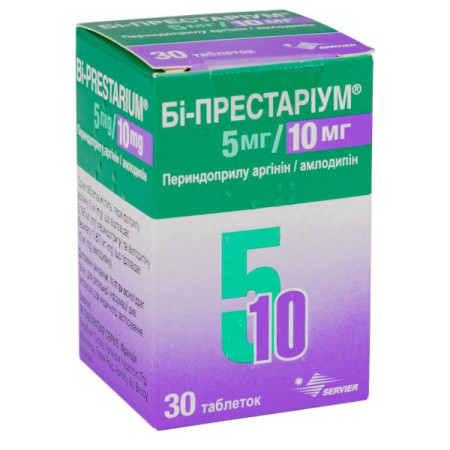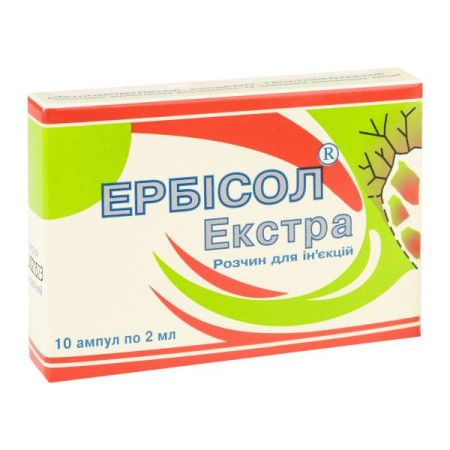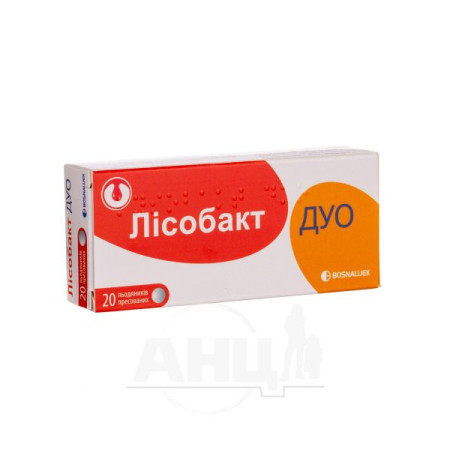Cetraxal Plus ear drops bottle 10 ml

Instructions for Cetraxal Plus ear drops, bottle 10 ml
Composition
active ingredients: ciprofloxacine; fluocinolone acetonide;
1 ml contains ciprofloxacin 3 mg (as ciprofloxacin hydrochloride monohydrate 3.49 mg), fluocinolone acetonide 0.25 mg;
excipients: methyl parahydroxybenzoate (E 218), propyl parahydroxybenzoate (E 216), povidone, diethylene glycol monoethyl ether, glycereth-26, diluted hydrochloric acid (adjustment to pH 4.6 – 4.7), purified water.
Dosage form
Ear drops, solution.
Main physicochemical properties: clear solution.
Pharmacotherapeutic group
Means acting on the sensory organs. Drugs used in otology. Combined drugs containing corticosteroids and antimicrobials. Fluocinolone acetonide and antimicrobials.
ATX code S02C A05.
Pharmacological properties
Pharmacodynamics.
Fluocinolone acetonide is a synthetic fluorinated corticosteroid that has pronounced anti-inflammatory, antipruritic and vasoconstrictive effects. The mechanism of the early anti-inflammatory action of topical corticosteroids involves inhibition of the migration of macrophages and leukocytes into the inflammatory site by constriction and reduction of vascular permeability. Later stages of the inflammatory process, such as capillary proliferation, collagen production and keloid scar formation, are also inhibited by corticosteroids.
Ciprofloxacin is a broad-spectrum antimicrobial drug of the fluoroquinolone group. The mechanism of antibacterial action is due to the ability of ciprofloxacin to inhibit type II topoisomerase (DNA gyrase) and topoisomerase IV - enzymes necessary for replication, transcription, repair and recombination of bacterial DNA.
The main mechanism of resistance of Pseudomonas aeruginosa to ciprofloxacin is mutation in the genes encoding the metaantibiotic (gyr A, gyrN, parC, parE). Another described mechanism of resistance is the overexpression of efflux pumps that expel the antibiotic from the bacteria, in particular, the Mex (Multiple EffluX) gene. Single mutations do not necessarily lead to the formation of clinical resistance, but multiple mutations usually lead to clinical resistance to ciprofloxacin.
However, the antibiotic concentration after topical treatment is always significantly higher than the minimum inhibitory concentration of the relevant organisms.
This raises the question of the emergence of bacterial resistance. The possibility of developing resistance of microorganisms to the drug is minimized with topical treatment compared to systemic treatment.
Limit values
For most topical agents, there are limited pharmacological data and no data on treatment outcomes. For this reason, EUCAST suggests that epidemiological breakpoints (ECOFFs) be used to determine susceptibility to topical agents.
EUCAST breakpoints for ciprofloxacin
| Microorganisms | Sensitive (S) | Resistant (R) |
| Staphylococcus species | S ≤ 1 mg/l | R ≥ 1 mg/l |
| Streptococcus pneumoniae | S ≤ 0.125 mg/l | R ≥ 2 mg/l |
Haemophilus influenzae and Moraxella catarrhalis | S ≤ 0.5 mg/l | R ≥ 0.5 mg/l |
| Pseudomonas species | S ≤ 0.5 mg/l | R ≥ 1 mg/l |
Below are the levels of antibacterial resistance for some microorganisms (according to data obtained in the EU).
Typically sensitive species
Aerobic Gram-negative microorganisms:
Proteus vulgaris.
Species for which acquired resistance may be a problem
Aerobic gram-positive microorganisms:
Staphylococcus aureus*.
Aerobic Gram-negative microorganisms:
Escherichia coli, Klebsiella pneumoniae, Proteus mirabilis, Enterobacter cloacae, Pseudomonas aeruginosa
Resistant species
Aerobic gram-positive microorganisms:
Enterococcus faecalis.
*Methicillin-resistant Staphylococcus aureus (MRSA) is considered resistant to ciprofloxacin.
Preclinical safety data: The ototoxicity of ciprofloxacin has been studied in experimental animals by local administration into the ear or intraperitoneally. None of the studies conducted in which possible histological changes in the inner ear were evaluated yielded results indicating ototoxicity of ciprofloxacin.
Pharmacokinetics: Blood samples were collected in two AOMT studies to determine plasma levels of ciprofloxacin and/or fluocinolone acetonide. Pharmacokinetic analysis showed no or negligible levels of the active substances in plasma, indicating that topical application of Cetraxal Plus to the ear is unlikely to result in pharmacokinetically or clinically significant systemic levels of ciprofloxacin and/or fluocinolone acetonide.
Indication
Cetraxal Plus is prescribed to adults and children aged 6 months and older for infections caused by microorganisms sensitive to ciprofloxacin, which have caused:
acute external otitis;
Acute otitis media in patients with tympanostomy tubes.
Official recommendations on the appropriate use of antibacterial drugs should be considered.
Contraindication
Hypersensitivity to fluocinolone, ciprofloxacin or other quinolones, or to any of the other ingredients of the drug.
Viral infections of the external auditory canal, including chickenpox, herpes simplex, and fungal ear infections.
Interaction with other medicinal products and other types of interactions
Drug interaction studies with Cetraxal Plus have not been conducted. However, given the predicted low plasma levels after instillation into the ear, it is unlikely that ciprofloxacin or fluocinolone would cause clinically significant systemic interactions with other drugs.
Systemic administration of some quinolones has been shown to enhance the effects of the oral anticoagulant warfarin and its derivatives and has been associated with a transient increase in serum creatinine in patients receiving concomitant cyclosporine.
Oral ciprofloxacin has been shown to inhibit cytochromes P450 CYP1A2 and CYP3A4 and to alter the metabolism of methylxanthine compounds (caffeine, theophylline). Following topical application of Cetraxal Plus, plasma concentrations of ciprofloxacin are low and interactions involving P450 effects on the metabolism of Cetraxal Plus and concomitant medications are unlikely to result in clinically significant changes in methylxanthine plasma levels.
Simultaneous use in the ear canal with other medications is not recommended. If more than one medication needs to be administered into the ear canal, it is recommended to administer them at intervals.
Application features
This medicine is for use in the ear and is not intended for ophthalmic use, inhalation or injection. This medicine should not be taken orally or injected.
If otorrhea persists after a full course of therapy or if two or more episodes of otorrhea occur within two months, further evaluation of the benefit should be recommended, which should be greater than the possible risk, to exclude underlying diseases such as cholesteatoma, foreign body or tumor. If some symptoms persist after treatment, further evaluation of the disease and treatment is recommended.
Cetraxal Plus should be discontinued at the first appearance of rash or other signs of hypersensitivity.
Serious and sometimes fatal hypersensitivity (anaphylactic) reactions have been reported in patients receiving systemic quinolones, some after the first dose. Serious acute hypersensitivity reactions may require immediate emergency care.
As with other antibiotics, the use of this drug may lead to the spread of microorganisms that are not susceptible to them, including strains of bacteria, yeasts and fungi. If superinfection occurs, appropriate measures should be taken.
Some patients taking systemic quinolones have demonstrated moderate to severe skin sensitivity to sunlight. Given the site of administration, it is unlikely that this drug would cause photosensitivity reactions.
Corticosteroids may reduce resistance to bacterial, viral, or fungal infections and promote their development, as well as mask the clinical signs of infection, which may make it difficult to detect antibiotic ineffectiveness or suppress hypersensitivity reactions to the components of the drug.
Cetraxal Plus may cause allergic reactions (possibly delayed) because it contains methyl parahydroxybenzoate and propyl parahydroxybenzoate.
Visual impairment
Visual disturbances may occur with systemic or topical corticosteroids. If a patient experiences symptoms such as blurred vision or other visual disturbances, they should consult an ophthalmologist to determine possible causes, which may include cataracts, glaucoma, or rare conditions such as central serous chorioretinopathy (CSR), which has been reported with systemic or topical corticosteroids.
Children.
The safety and efficacy of Cetraxal Plus in children under 6 months of age have not been established.
In exceptional cases, Cetraxal Plus may be used in this pediatric patient group after a careful benefit/risk assessment by the prescribing physician, taking into account that, despite the absence of known safety concerns or differences in the course of the disease that would preclude the use of the drug in such patients, clinical experience in such use is insufficient.
Use during pregnancy or breastfeeding
Available data on the treatment of pregnant women with ciprofloxacin do not confirm its toxic effect on the development of the fetus and the health of the newborn. Since the systemic exposure to ciprofloxacin will be very low, no effect on the fetus is expected.
Corticosteroids, when administered systemically, have been shown to be teratogenic in laboratory animals at relatively low doses.
Some corticosteroids have demonstrated teratogenicity after application to the skin in laboratory animals.
There are no adequate and well-controlled studies in pregnant women regarding the teratogenic effects of fluocinolone acetonide.
Before administering the drug, the benefits of treatment should be assessed against the possible risks.
Breast-feeding
Systemically administered corticosteroids pass into a woman's breast milk and may affect the development of the infant, interfere with endogenous corticosteroid production, or cause other side effects.
It is not known whether topical application of corticosteroids can result in systemic absorption sufficient to detect the drug in breast milk.
Given that most drugs are excreted in breast milk, caution should be exercised when Cetraxal Plus is administered to women during breastfeeding.
Fertility
No animal studies have been conducted to evaluate the effects of Cetraxal Plus on fertility.
Ability to influence reaction speed when driving vehicles or other mechanisms
There is no data on the effect of ear drops on the ability to drive or use other mechanisms.
Given the method of administration, conditions of use and safety profile of Cetraxal Plus, the drug does not affect the ability to drive a car or operate other mechanisms.
Method of administration and doses
For instillation into the ear canal.
Adults, including elderly patients.
Acute otitis externa and acute otitis media in patients with tympanostomy tubes: instill 6–8 drops into the affected external ear canal every 12 hours for 7 days.
There are no overall differences in safety and effectiveness between elderly and other adult patients.
Patients with impaired liver/kidney function.
There is no need for dose adjustment.
Precautions to be taken before using the medicinal product
It is recommended to warm the bottle before use by holding it in the palms of your hands for a few minutes. This will help to avoid discomfort due to the cold solution getting into the ear canal. The patient should tilt their head to one side so that the affected ear is on top. Drops should be placed in the affected ear and the earlobe should be pulled several times.
Patients with acute otitis media with tympanostomy tubes should press the tragus inward 4 times to facilitate the penetration of the drops into the middle ear. This position should be maintained for approximately 1 minute to facilitate the penetration of the drops into the ear.
Repeat steps, if necessary, for the opposite ear.
To prevent contamination of the dropper tip and reduce the risk of bacterial contamination, care should be taken not to touch the auricle or external auditory canal and surrounding areas with the dropper tip. The bottle should be kept tightly closed when not in use.
Children.
Use in children aged 6 months and older is the same as for adults for both indications.
Overdose
No cases of overdose have been described.
Due to the low plasma levels observed after otic administration, it is unlikely that topically applied ciprofloxacin or fluocinolone acetonide would have clinically significant systemic effects. However, in the case of chronic overdose and topical use of other dosage forms such as ointments, creams, systemic reactions, including signs of hypercorticism, are possible.
The limited retention capacity of the ear canal for topical medications in the ear canal virtually prevents overdose when instilled into the ear canal. However, oral administration of Cetraxal Plus, resulting in overdose, or prolonged therapy for ear diseases, may lead to suppression of the hypothalamic-pituitary-adrenal (HPA) axis.
Although in the pediatric population, a decrease in growth velocity and/or suppression of plasma cortisol concentrations may be more pronounced after significant overdose or prolonged therapy (e.g., several months) with Cetraxal Plus, the effect is expected to be temporary (days to weeks) and reversible without long-term consequences.
If the drug is accidentally swallowed, it is necessary to rinse the stomach or artificially induce vomiting, as well as prescribe activated charcoal and antacids containing magnesium and calcium.
Adverse reactions
The adverse reactions listed in the table below were identified in clinical trials or from post-marketing experience.
Classification of the frequency of adverse reactions: very common (≥ 1/10), common (≥ 1/100 to <1/10), uncommon (≥ 1/1000 to <1/100), rare (≥ 1/10000 to <1/1000), very rare (<1/10000), frequency unknown (cannot be estimated from the available data).
Within each frequency grouping, adverse reactions are presented in order of decreasing seriousness.
| Organ system classes | Adverse reactions (MedDRA preferred term) |
| Infections and infestations | Uncommon: candidiasis, ear fungal infection, contralateral otitis media |
| Nervous system disorders | Common: dysgeusia Uncommon: paresthesia (tingling in the ears), dizziness, headache, tearfulness |
| Hearing and labyrinth disorders | Common: ear pain, ear congestion, ear itching Uncommon: hypoacusis, tinnitus, otorrhea, ear plug, tympanic membrane lesion, auricular (ear) edema |
| Visual impairment | Frequency unknown: blurred vision (for detailed information, see section "Special warnings and precautions for use.") | Vascular disorders | Uncommon: hot flushes |
| Gastrointestinal disorders | Uncommon: vomiting |
| Skin and subcutaneous tissue disorders | Uncommon: skin exfoliation, erythematous rash, rash, granulation tissue |
| General disorders and administration site reactions | Uncommon: irritability, fatigue |
| Research | Uncommon: drug residue in the ear canal |
| Injury, poisoning and procedural complications | Uncommon: device blockage (tympanostomy tube obstruction) |
| Immune system disorders | Uncommon: allergic reaction |
Description of selected adverse reactions
Serious anaphylactic hypersensitivity reactions, some after the first dose, have been observed in patients receiving systemic quinolone therapy. Some reactions were accompanied by cardiovascular collapse, loss of consciousness, angioedema (including laryngeal, pharyngeal or facial oedema), airway obstruction, dyspnoea, urticaria and pruritus.
Tendon ruptures of the shoulder, hand, Achilles tendon, or other tendons requiring surgical repair or resulting in long-term disability have been reported in patients receiving systemic fluoroquinolones. Studies and post-marketing experience with systemic fluoroquinolones suggest that the risk of such ruptures may be increased in patients receiving corticosteroids, particularly in the elderly, and in patients with high tendon loads, including the Achilles tendon.
To date, clinical and post-marketing data have not demonstrated a clear relationship between the use of the drug and adverse reactions from the musculoskeletal and connective tissue.
Pediatric population
Cetraxal Plus has been shown to be safe for use in patients aged 6 months and older.
Reporting of suspected adverse reactions.
Reporting suspected adverse reactions that occur after the registration of a medicinal product is of utmost importance. This allows for continuous monitoring of the benefit/risk balance of the medicinal product. Healthcare professionals are asked to report any suspected adverse reactions via the national reporting system.
Expiration date
2 years.
After opening the bottle, store the drug for one month.
Do not use after the expiry date stated on the packaging.
Storage conditions
Store at a temperature not exceeding 30 °C.
Keep out of reach of children.
Packaging
The bottle contains 10 ml of solution, 1 bottle in a cardboard box.
Incompatibility: Not described.
Vacation category
According to the recipe.
Producer
Salvat Laboratory, S.A.
Location of the manufacturer and its business address
Gall, 30-36, 08950 Esplugues de Llobregat, Barcelona, Spain.
There are no reviews for this product.
There are no reviews for this product, be the first to leave your review.
No questions about this product, be the first and ask your question.













